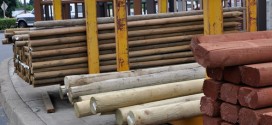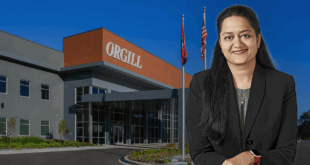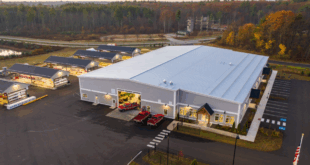Hardware Retailing asked distributors how they amended operations to best serve their customers during the initial phases of lockdown, including communication and supply chain logistics. Read the remarks from Do it Best’s vice president of merchandising Dent Johnson below, and click here to read comments from other wholesaler representatives.
Hardware Retailing (HR): Obviously, the situation changes day to day, so it’s difficult to make a plan for many weeks into the future. What are your plans at this time to manage your supply chain?
Dent Johnson (DJ): Early on, we created a war room in both our Merchandising and Lumber and Building Materials divisions as a way to bring focus to the day-to-day challenges and opportunities with product availability. This is where we evaluate lead times, supply chain disruptions, new vendor sources and more on a daily—sometimes even hourly—basis to ensure minimal disruption for our member-owners. Of course, everyone experienced disruptions in sourcing some categories early on, like face masks, sanitizers and high-demand COVID-19 products, because initial supplies were redirected to health care and government use. But our team has attacked this with some unconventional approaches working with new sources of supply.
HR: How are you staying in communication with retailers and vendors?
DJ: It’s a multi-pronged approach. On the front lines, our field team is actively engaged with our store owners on a regular basis. We filled our member website with pandemic response information as well as supply chain updates. We also quickly launched a text service for LBM members so they could stay current on rapidly changing situations at the mills and manufacturers.
HR: What are your recommendations and solutions to retailers for communicating to you about their operations or requests for products? Has the system for that changed?
DJ: That hasn’t really changed, other than the urgency of the requests. We’ve been working with our members to get ahead of anticipated needs whenever possible. With record volume through distribution, it’s been important to project out demand in much shorter time frames so we’re ready to meet or exceed their expectations.
HR: How are you addressing high demand for certain products, like household cleaners and paper goods?
DJ: Our team is working diligently to meet demand, and in some cases, that has meant instituting maximum order quantities. What’s been interesting to track is the demand for items as families stayed busy at home, including paint, kitchen products, gas cans, air and water filtration products and items for craft projects.
HR: What recommendations do you have for retailers to continue the supply chain through to their customers while keeping health and safety top of mind?
DJ: We continue to be wowed by the ingenuity and entrepreneurial spirit exhibited by our members during this unprecedented time. Their quick adaptability to offering curbside pickup, delivery, social distancing, and more into their operations has been remarkable. They have really taken their essential business status seriously and have gone to great lengths to install plexiglass shields, provide masks and implement sanitization best practices to ensure the safety of their customers and their team. Many have found the tremendous value that social media provides them to stay connected with their community.
Click here to listen to an episode of the “Taking Care of Business” special podcast series Peptalk featuring Do it Best’s vice president of marketing Rich Lynch for more details on how the wholesaler managed operations early on in the pandemic.
 Hardware Retailing The Industry's Source for Insights and Information
Hardware Retailing The Industry's Source for Insights and Information








